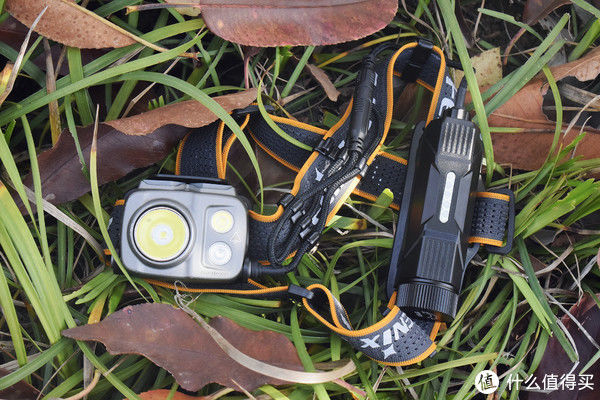从无到有玩NodeMcu:web端控制
我们的目标:硬件准备:
【硬件|从无到有玩NodeMcu(web端控制)】利用网页web端为搭载NodeMcu的esp8266连接wifi
- 基于NodeMcu的esp8266
- 数据线:usb+micr-usb
- 安装有Windows系统的电脑
- java运行环境:自行安装,注意,需要下载jdk8,太高的版本会使软件闪退
- nodemcu-flasher:esp8266固件烧录程序
- ESPIorer:为NodeMcu设计的编辑、上传软件
- CH340驱动:用来连接电脑和esp8266 验证码
ja94 - NodeMcu固件:NodeMcu团队为esp8266制作的固件 验证码
u5zv
我们以nodemcu-flasher的下载为例进入GitHub相关界面 点击nodemcu-flasher进入
nodemcu-flasher的项目主页,只下载的话是不用注册的:
文章图片
点击项目有时间的
clone or download按键后会弹出一个小框,选择小框里的download zip即可下载源代码,下载完毕后解压缩即可
文章图片
如何安装CH340驱动
下载百度云内的文件,得到一个叫
Setup 32.64位元.exe的程序,执行它安装驱动。安装成功后使用数据线连接esp8266,打开设备管理器,如果显示下面的情况,则说明驱动已经安装完成:
文章图片
如果没有显示,则有可能是数据线的问题,换一根数据线。如果显示modify、repair、remove的话,说明你以前已经安装过这个驱动了,如果你的设备管理器没有正常的话,就需要remove把以前的程序删除再重新安装
固件烧录
下载NodeMcu固件,得到
nodemcu-master-11-modules-2019-07-22-07-39-27-float.bin这个文件,然后我们打开NodeMcu-flash,连接esp8266到电脑:我们选择config,再在下面绿色的框里填写NodeMcu固件的本地文件地址,也就是你放固件的地方

文章图片
我们回到Operation(正常情况下COM Port后面的Select port是有值的,我这边为了操作方便没有连接电脑),点击Flash按钮,固件就会被烧录到esp8266中了。

文章图片
源代码准备
源代码分为三类:我们需要按以下步骤获得
- 控制esp8266的lua程序
- 控制网页的html程序
- 负责沟通esp8266和网页的http服务器程序
init.lua index.html HttpServe.lua三个文件,并把它们放在一个文件夹- 新建一个
.txt文件 - 复制代码
- 重命名文件为相应的名字
init.lua
wifi.setmode(wifi.STATIONAP)
cfg={}
cfg.ssid="config"
--我们的NodeMcu热点
cfg.pwd="00000000"
--密码
wifi.ap.config(cfg)
cfg2 =
{
ip="192.168.1.1",
--设置IP
netmask="255.255.255.0",
--子网掩码
gateway="192.168.1.1"
--默认网关
}
wifi.ap.setip(cfg2)
wifi.sta.autoconnect(1)
--自动连接
dofile('httpServer.lua')
--执行HttpServer.luahttpServer:use('/config', function(req, res)
if req.query.ssid ~= nil and req.query.pwd ~= nil then
print(req.query.ssid ..req.query.pwd)
config={}
config.ssid=req.query.ssid
config.pwd=req.query.pwd
wifi.sta.config(config)
end
res:send('配置终端 - 锐客网 您设置的wifi是:'..req.query.ssid..',请等待红灯常亮即连接完成。')
end)httpServer:listen(80)
--启动Server
httpServer.lua
--------------------
-- helper
--------------------
function urlDecode(url)
return url:gsub('%%(%x%x)', function(x)
return string.char(tonumber(x, 16))
end)
endfunction guessType(filename)
local types = {
['.css'] = 'text/css',
['.js'] = 'application/javascript',
['.html'] = 'text/html',
['.png'] = 'image/png',
['.jpg'] = 'image/jpeg'
}
for ext, type in pairs(types) do
if string.sub(filename, -string.len(ext)) == ext
or string.sub(filename, -string.len(ext .. '.gz')) == ext .. '.gz' then
return type
end
end
return 'text/plain'
end--------------------
-- Response
--------------------
Res = {
_skt = nil,
_type = nil,
_status = nil,
_redirectUrl = nil,
}function Res:new(skt)
local o = {}
setmetatable(o, self)
self.__index = self
o._skt = skt
return o
endfunction Res:redirect(url, status)
status = status or 302 self:status(status)
self._redirectUrl = url
self:send(status)
endfunction Res:type(type)
self._type = type
endfunction Res:status(status)
self._status = status
endfunction Res:send(body)
self._status = self._status or 200
self._type = self._type or 'text/html' local buf = 'HTTP/1.1 ' .. self._status .. '\r\n'
.. 'Content-Type: ' .. self._type .. '\r\n'
.. 'Content-Length:' .. string.len(body) .. '\r\n'
if self._redirectUrl ~= nil then
buf = buf .. 'Location: ' .. self._redirectUrl .. '\r\n'
end
buf = buf .. '\r\n' .. body local function doSend()
if buf == '' then
self:close()
else
self._skt:send(string.sub(buf, 1, 512))
buf = string.sub(buf, 513)
end
end
self._skt:on('sent', doSend) doSend()
endfunction Res:sendFile(filename)
if file.exists(filename .. '.gz') then
filename = filename .. '.gz'
elseif not file.exists(filename) then
self:status(404)
if filename == '404.html' then
self:send(404)
else
self:sendFile('404.html')
end
return
end self._status = self._status or 200
local header = 'HTTP/1.1 ' .. self._status .. '\r\n'
self._type = self._type or guessType(filename) header = header .. 'Content-Type: ' .. self._type .. '\r\n'
if string.sub(filename, -3) == '.gz' then
header = header .. 'Content-Encoding: gzip\r\n'
end
header = header .. '\r\n' print('* Sending ', filename)
local pos = 0
local function doSend()
file.open(filename, 'r')
if file.seek('set', pos) == nil then
self:close()
print('* Finished ', filename)
else
local buf = file.read(512)
pos = pos + 512
self._skt:send(buf)
end
file.close()
end
self._skt:on('sent', doSend)
self._skt:send(header)
endfunction Res:close()
self._skt:on('sent', function() end) -- release closures context
self._skt:on('receive', function() end)
self._skt:close()
self._skt = nil
end--------------------
-- Middleware
--------------------
function parseHeader(req, res)
local _, _, method, path, vars = string.find(req.source, '([A-Z]+) (.+)?(.+) HTTP')
if method == nil then
_, _, method, path = string.find(req.source, '([A-Z]+) (.+) HTTP')
end
local _GET = {}
if vars ~= nil then
vars = urlDecode(vars)
for k, v in string.gmatch(vars, '([^&]+)=([^&]*)&*') do
_GET[k] = v
end
end
req.method = method
req.query = _GET
req.path = path
return true
endfunction staticFile(req, res)
local filename = ''
if req.path == '/' then
filename = 'index.html'
else
filename = string.gsub(string.sub(req.path, 2), '/', '_')
end
res:sendFile(filename)
end--------------------
-- HttpServer
--------------------
httpServer = {
_srv = nil,
_mids = {{
url = '.*',
cb = parseHeader
}, {
url = '.*',
cb = staticFile
}}
}function httpServer:use(url, cb)
table.insert(self._mids, #self._mids, {
url = url,
cb = cb
})
endfunction httpServer:close()
self._srv:close()
self._srv = nil
endfunction httpServer:listen(port)
self._srv = net.createServer(net.TCP)
self._srv:listen(port, function(conn)
conn:on('receive', function(skt, msg)
local req = { source = msg, path = '', ip = skt:getpeer() }
local res = Res:new(skt)for i = 1, #self._mids do
if string.find(req.path, '^' .. self._mids[i].url .. '$')
and not self._mids[i].cb(req, res) then
break
end
endcollectgarbage()
end)
end)
end
index.html
配置终端 - 锐客网
配置页面
注意:由于NodeMCU内存很小,附近热点过多时,扫描热点会造成内存不足自动重启。请手动输入WIFI信息进行配置。
>
input{
margin-bottom:30px;
}
硬件操作 上传服务器文件
我们把esp8266当作一个小型的服务器,我们需要把打开ESPLore 我们运行index.html、init.lua和HttpServe.lua这两个文件传到esp8266上
ESPIorer.jar这个程序来运行这个软件,我们可以看到它的主界面:
文章图片
连接硬件 我们通过数据线把esp8266和电脑连接起来
上传程序
- 再确定命令执行框上方
open右侧的波特率是否为115200,如果不是的话请调整 - 在点击右边命令执行框上方的
open来打开串口,会出现Communication with MCU..,此时马上按硬件上靠近数据线的rst键 - 看见屏幕出现一些NodeMcu的信息即可
- 点击源代码编辑框的
upload键,选择上传所有之前创立的三个文件 - 点击右边的
Reload按键,右键点击init.lua按键,点击Run init.lua
config 密码是00000000,连接它使用浏览器进入
http://192.168.1.1出现以下画面:
文章图片
参考
- NodeMCU-Tutorial
- Nodemcu通过网页Web设置sta.config配置
- win10如何安装CH340驱动? - 知乎
- NodeMCU使用说明整理













